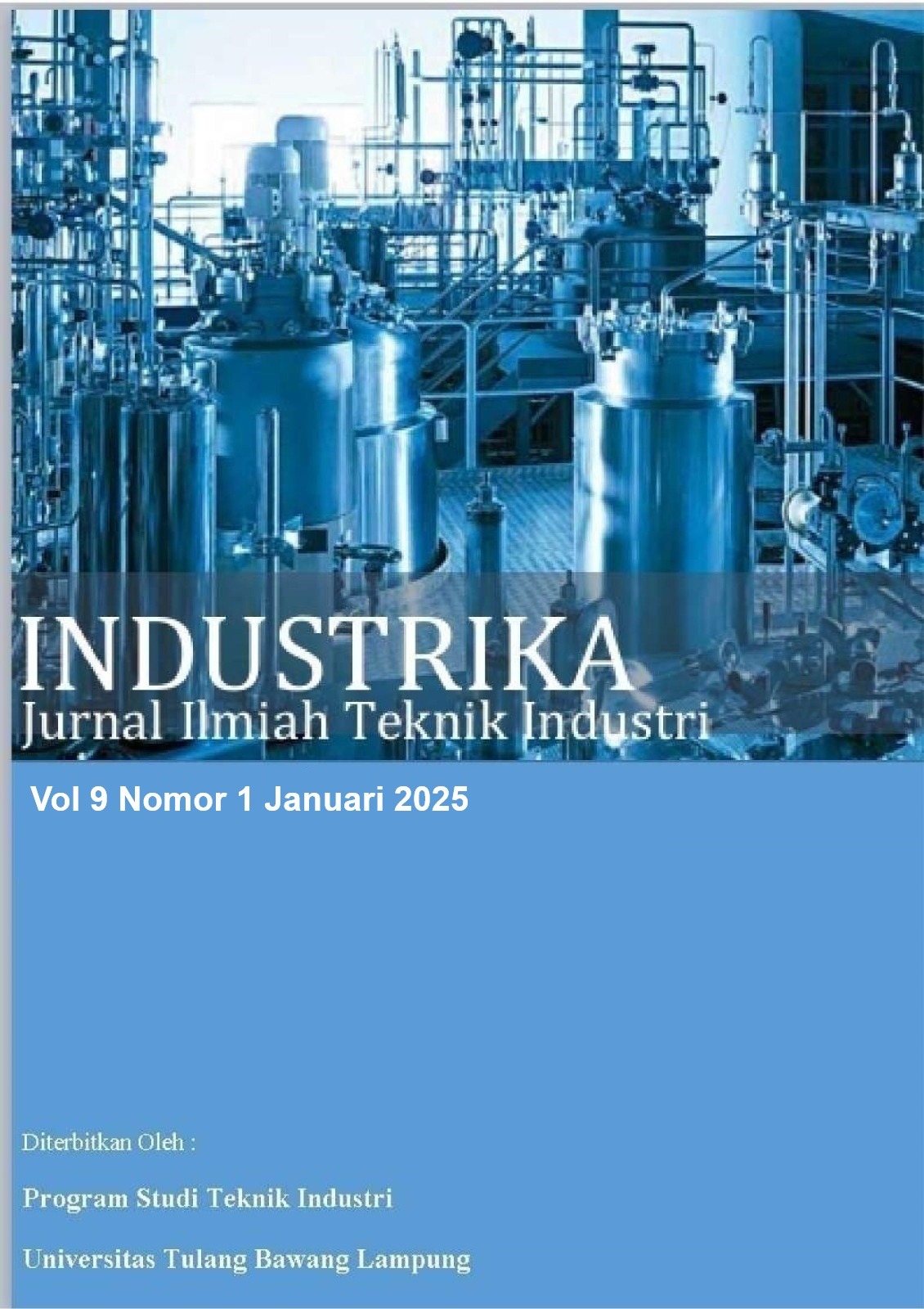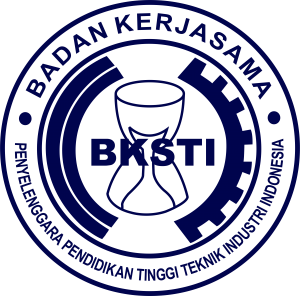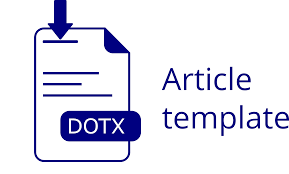Rancang Bangun Alat Penumbuk Adonan Guna Meningkatkan Efisiensi Produksi Dan Higienis Pada Produk Biskuit Dengan Pendekatan Ergonomi Dan Kelayakan Investasi
DOI:
https://doi.org/10.37090/indstrk.v9i1.1940Abstract
UMKM Banjar Biscuit "Bu Min" in Sumber Nongko Village, Jombang Regency produces traditional snacks made from sticky rice using manual methods, especially at the dough-pounding stage. This manual process causes physical fatigue in workers, affects production efficiency, and threatens product hygiene. With increasing market demand, UMKM faces major challenges in meeting consumer needs. To overcome this problem, an ergonomic dough-pounding tool was designed with dimensions of 140 cm high, 50 cm wide, 50 cm long, and a mortar diameter of 30 cm. This tool successfully reduced the Work Heart Rate (WHR) of workers from 118-149 to 93-124 beats/minute, indicating a significant reduction in cardiovascular load. In addition to increasing production efficiency, this tool maintains product hygiene and reduces the risk of worker injury. From a financial perspective, the cost of making the tool of Rp 5,306,000 has proven to be economical with an IRR of 5.26% per month (51.2% per year), a Profitability Index of 6.04, a positive NPV, and a Payback Period of only 2 months. This innovation helps MSMEs improve the quality and quantity of production while strengthening competitiveness in a competitive market. Keywords: Anthropometry, Cardiovascular Load, Engineering EconomicsDownloads
References
Alya, *, Khairunnisa, S., Syafira Khairunnisa, A., Najmi, B., Putri Syaela, A., Fauziah, F. N., Nazhirah, H. M., Azlia, M., Sofa, N., Nayyara, N. S., Wijaya, R., & Rozak, A. (2024). Analisis Pengaruh Influencer Terhadap Keputusan Pembelian Skincare dan Make Up di Kalangan GenZ. Jurnal Mahasiswa Kreatif, 2(3), 19–30. https://doi.org/10.59581/jmk-widyakarya.v2i1.3101
Anggara Anita, L. (2023). PERANCANGAN MEJA-KURSI BELAJAR ERGONOMIS SISWA SEKOLAH DASAR BERBASIS PEMETAAN PERUBAHAN DATA ANTROPOMETRI. Jurnal Industrika (Jurnal Ilmiah Teknik Industri), 7(2), 191–198.
Anisah Salsabila Nasution, Devi Nadya Hasibuan, Windi Mayani Dalimunthe, & Purnama Ramadani Silalahi. (2022). Peningkatan Kinerja Industri Makanan dan Minuman Melalui Transformasi Digital di Indonesia. Trending: Jurnal Manajemen Dan Ekonomi, 1(1), 165–176. https://doi.org/10.30640/trending.v1i1.493
Bridger. (2001). Introduction to Ergonomics. Taylor & Francis.
Davide. (2015). Practical Manual of Quality Function Deployment.
Eka, P., Karunia Wati, D., & Singgih, M. (2019). Perancangan Ulang Tata Letak Fasilitas Dengan Memperhatikan Aspek Ergonomi Lingkungan. Jurnal Teknologi Dan Terapan Bisnis, 2(2), 33–41.
Farrel Fachriean Rangkuti, M., Nurul Azizah, F., Teknik Industri, P., Singaperbangsa Karawang Jl HSRonggo Waluyo, U., Timur, T., & Barat, J. (2024). Penerapan Konsep Line Balancing Menggunakan Metode Ranked Position Weight Pada Proses Produksi Pakan Ternak PT. XYZ. Jurnal Industrika (Jurnal Ilmiah Teknik Industri), 8(1), 116–124.
Iriani, Y., Kaniawati, K., & Latifah, I. (2022). Analisis Efektivitas Mesin Produksi Dalam Upaya Peningkatan Produksi Opak Ketan. Prosiding Seminar Nasional Hasil Penelitian Dan Pengabdian Masyarakat, 187–195.
Kelvin, K., Lane Keller เป, K., & Osborn, น. E. (2016). Marketing Management. (15 th global edition) Edinburgh: Pearson Education. In Kasem Bundit Journal (Vol. 18, Issue 2).
Murnawan, H., & Anggraeni, H. N. (2023). Implementasi 5S/5R, CIL (Cleaning, Inspection, Lubricate) Dan Defect Handling Terhadap Performance Lini Kecap Kemasan Sachet Guna Menurunkan UPL (Unplanloss) Di PT XXX. SEMNASTI, 351–362. https://semnasti.unipasby.ac.id/proceedings/
Purna Irawan, A. (2017). Perancangan dan Pengembangan Produk Manufaktur. https://www.researchgate.net/publication/328040816
Setiana, A. F., & Murnawan, H. (2024). Perencanaan Tata Letak Gudang dengan Prinsip 5S (Seiri, Seiso, Seiton, Seiketsu, dan Shitsuke) Pada PT. Aneka Coffee Industry Guna Meminimalkan Waktu Pencarian di Gudang. Jurnal Teknik Industri Terintegrasi, 7(3), 1489–1500. https://doi.org/10.31004/jutin.v7i3.28878
Sundari, S., Amir, A., & Liberty Gustaf, A. (2024). Perbaikan Produktivitas UMKM Melalui Pemilihan Mesin Jahit Yang Tepat: Studi Kasus Pengrajin Sulam Usus. INDUSTRIKA, 8(4), 1011–1018. https://jurnal.utb.ac.id/index.php/indstrk
Tekendo Djoukoue, G., Olabhele Esangbedo, M., & Bai, S. (2024). Ishikawa Diagram, Gray Numbers and Pareto Principle for the Analysis of the Causes of WEEE Production in Cameroon: Case of SMEs Implementing ISO 14001:2015. Journal of Management Science & Engineering Research, 7(1), 22–42. https://doi.org/10.30564/jmser.v7i1.6030
Wijaya, G. F., Rizky Oktadini, N., Sevtiyuni, P. E., & Buchari, M. A. (2022). Adoption of SNI ISO/IEC 17025:2017 Principles for Laboratory Management Information System Development. Ultima Infosys : Jurnal Ilmu Sistem Informasi, 13(1), 37.
Downloads
Published
Issue
Section
License

This work is licensed under a Creative Commons Attribution-ShareAlike 4.0 International License.









